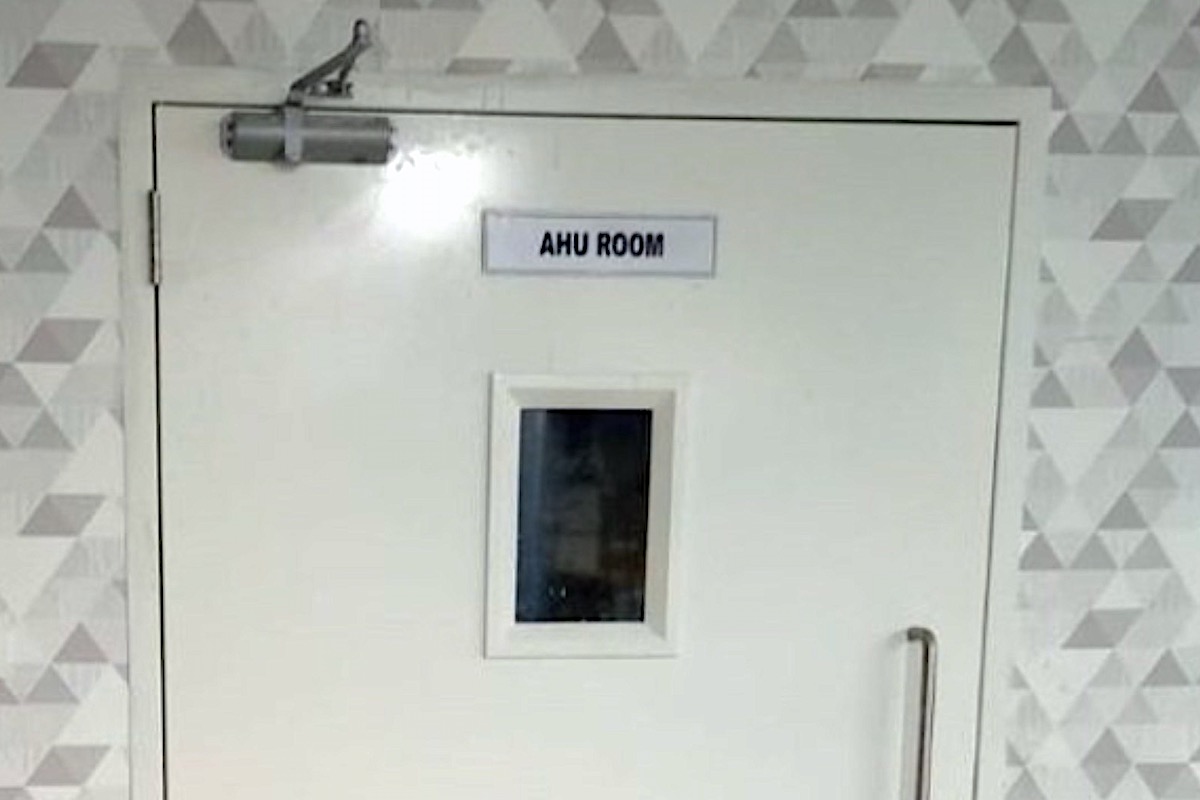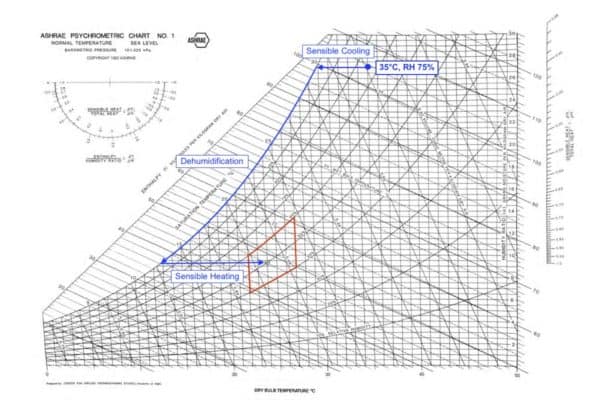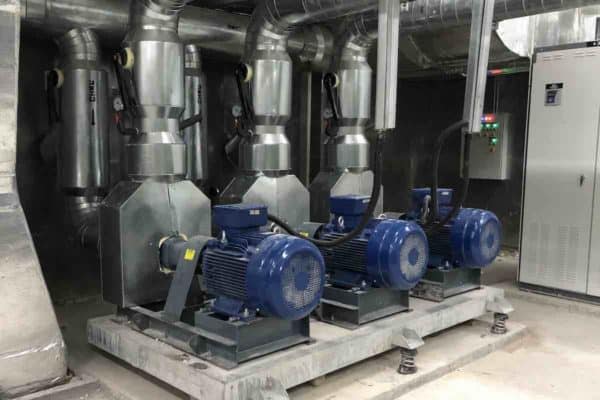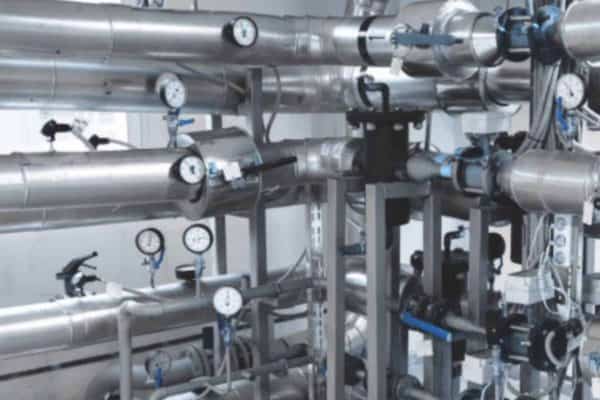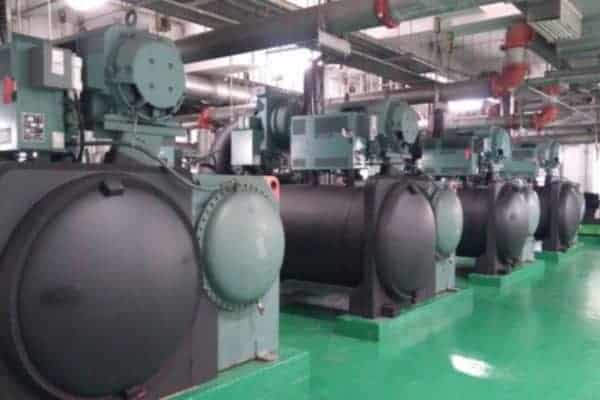What is AHU ROOM? (AHU ROOM Meaning)
Almost every building has one or more AHU ROOM. However, many people don’t know what is the meaning of AHU ROOM. Some people are also wondering if there is anything that they can do to change the AHU ROOM size. So, what exactly is AHU ROOM and what can you do about it?
AHU stands for Air Handling Unit. So, AHU ROOM full form is Air Handling Unit Room, a room dedicated to the air handling unit which is a core equipment of the heating, ventilation and air conditioning system.
The space occupied by an AHU room is quite significant. Some people want to reduce the AHU room size so that they can have more space for commercial purposes.
What is AHU?
An air handling unit or AHU is a large centralized air conditioning unit that supplies conditioned cold air to multiple spaces in a building. Without a centralized air conditioning unit like an AHU, each and every room has to have one air conditioner which increases the complexity and maintenance cost.
So, air handling units are cost-effective and energy-efficient machines for heating and cooling.
Due to their physical size, AHUs need to be placed in dedicated rooms. In general, AHU rooms are located at the corner of a building, around other mechanical service rooms, or on mechanical service floors.
AHU rooms can be seen in the hallway of hospitals, at the back of shopping malls and hotels. They are mostly accessed by maintenance personnel and operators. So, their location needs to be where it is most convenient to carry out periodical service and maintenance work.
Why AHU Rooms are Needed?
Air handling units are much bigger than standard wall-mounted air conditioners in terms of their cooling capacity and physical dimensions. So, they’re mostly installed and mounted on the floor. Hence, a room is needed to house them and their associated components.
AHUs distribute conditioned cold air through large HVAC ducts. Besides, AHUs also need more power and thus, there are large cables connecting to the AHU. Additionally, there are many sensors and electrical devices used to control AHUs.
Therefore, a sufficiently sized room is needed to house everything that is connected to the AHU.
Moreover, AHUs are noisy. Hence, putting them in a sealed room can help reduce the noise. If an AHU room is located next to a noise-sensitive space, sound insulation can be placed within the AHU room to further reduce the noise.
One AHU vs Multiple Air Conditioners
A common debate among engineers is whether or not we need an AHU (and thus, an AHU room) or whether we can use multiple wall-mounted or ceiling-mounted air conditioners so that we can eliminate the need for an AHU room.
So, here are the pros and cons of having one AHU versus multiple smaller air conditioners:
One Big AHU
Multiple Small ACs
Whenever an AHU is used, an AHU room is inevitable unless the HVAC design engineer can break it down into 2-3 medium-sized FCUs (fan coil units). Depending on the size, many FCUs can be installed above the ceiling and still able to provide the kind of centralized control, low noise and good energy efficiency that AHUs offer.
AHU Room Requirements
If an AHU room is needed, there are many requirements that the room must meet. Some of the essential AHU room requirements are as follows:
1. The AHU Room Must Be Big Enough
An AHU room must have enough width, length and height to accommodate the physical dimension of the selected AHU. The size of an AHU varies greatly depending on the cooling capacity, customizable components and air conditioning requirements.
In addition, space must be reserved for maintenance personnel to carry out regular cleaning work as well as major overhaul work which involves part replacements such as fan motor and cooling coil. These parts can be big by themselves and many are not breakable into smaller pieces.
Furthermore, sufficient space must also be provided within the AHU room for duct transition. The supply and return duct right after an AHU is much bigger than those running in individual rooms.
2. Sound Insulation Is Needed If It Is Too Noisy
When an AHU room is located beside a noise-sensitive space such as a hospital ward room or an auditorium, sound insulation is needed within the AHU room.
The thickness of the sound insulation material can be as much as 3 inches (75mm). So, the net usable space in the AHU shrinks. Therefore, the overall size of the AHU room must be increased to accommodate the space required by the AHU and its maintenance work.
3. It Must Be Easily Accessible for Service
The location of the AHU room is very much depending on how the HVAC ducts run. Generally, we want to place the AHU at a location where the resulting HVAC duct length is the shortest so that the complexity and cost of the duct are minimal.
If the duct needs to penetrate to other floors, the AHU room must be positioned near the floor penetration for optimal energy efficiency and performance.
Apart from that, as mentioned earlier, AHU rooms should be located near the access so that the installation, logistics, service and maintenance work can be conveniently carried out.
How to Reduce AHU Room Size?
Now, if an AHU room is inevitable and its location is also unchangeable, you may have a chance to reduce the AHU room size with the following ideas:
- Use a plug fan instead of a centrifugal fan. Plug fans can reduce the AHU’s physical size remarkably. However, plug fans are more costly to purchase and replace. But, they are much more energy efficient than the conventional centrifugal fans.
- Omit unnecessary components within the AHU. Certain components like secondary filters and UV lamps can be eliminated if you can accept the reduction in the HVAC requirements.
- Deploy a free return design instead of a ducted return design. The AHU room itself can be used as a return plenum box and thus, a return air duct is not needed inside the AHU room. Therefore, you can shrink the AHU room size.
- Use a vertical AHU instead of a horizontal AHU, subject to the available cooling capacity. As the name suggests, vertical AHUs occupy less footprint compared to horizontal AHUs. However, you must make sure the room height is sufficient.
- Make sure the cooling capacity is optimal. Over-estimating the cooling load or imposing too great of a safety factor will result in an AHU size larger than it is supposed to be.
The above are some ideas that you can try if you really want to shrink the AHU room size.
In conclusion, AHU rooms are essential for the heating, ventilation and air conditioning system in a building. Sacrificing the AHU room may result in a never-ending heating or cooling problem. However, there is always room for improvement when it comes to shrinking the AHU room size as I outlined above.
If you need more help regarding the above topic, feel free to consult me. I provide various design and consultation services related to HVAC.
If you have anything to add (or ask) about this topic, leave a comment down below!


